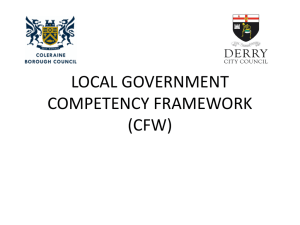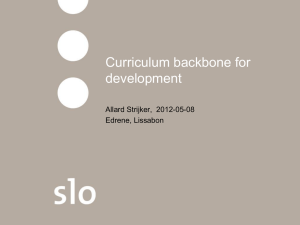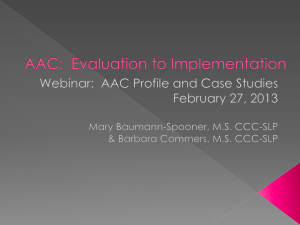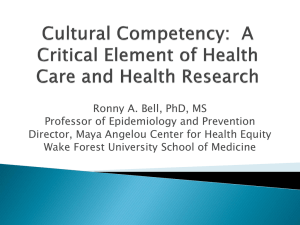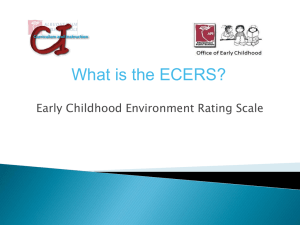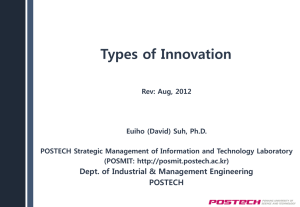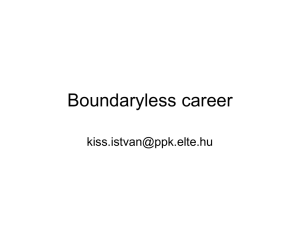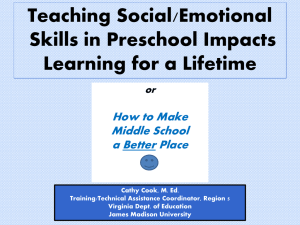Digital Competence Consumers - European Consumer Summit 2014
advertisement
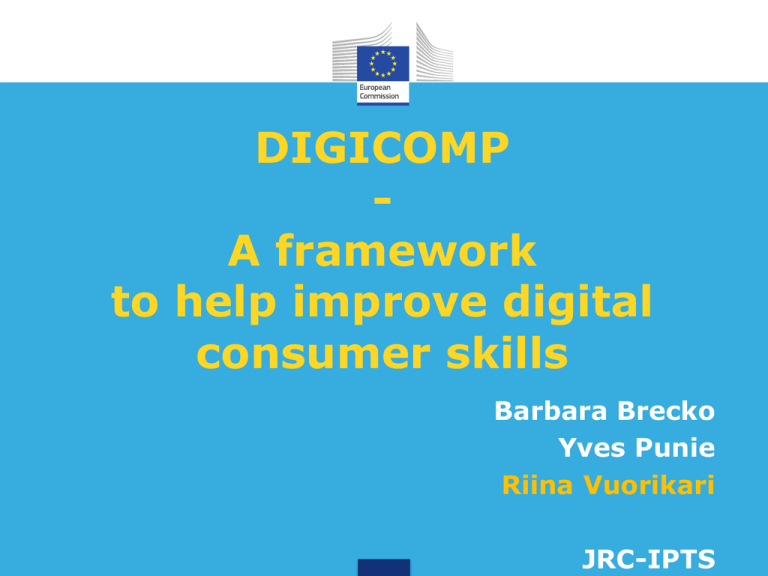
DIGICOMP A framework to help improve digital consumer skills Barbara Brecko Yves Punie Riina Vuorikari JRC-IPTS European Commission, Joint Research Centre European Commission's in-house science service Institute for Prospective Technological Studies (IPTS) Research institute supporting EU policy-making on socio-economic, scientific and/or technological issues JRC IPTS study on Digital Competence for DG EAC A3 (2010-2012) This presentation: •“Digitally competent” •Introduction to the framework, and what to do with it? •Examples for consumers needs in on-line shopping http://is.jrc.ec.europa.eu/pages/EAP/DIGCOM P.html What does it mean to be digitally competent? Digital competence ≠ use of ICT tools Digital competence involves the confident and critical use of ICT for employment, learning, self-development and participation in society (EC, 2006). ATTITUDES KNOWLEDGE COMPETENCE SKILLS An encompassing definition Digital competence is the set of knowledge, skills, attitudes, strategies and awareness Learning domains that are required when using ICT and digital media Tools to perform tasks; solve problems; communicate; manage information; collaborate; create and share content; and build knowledge Competence areas effectively, efficiently, appropriately, critically, creatively, autonomously, flexibly, ethically, reflectively for work, leisure, participation, learning, socialising, consuming & empowerment Modes Purpose A short introduction to the framework JRC IPTS study on Digital Competence for DG EAC A3 (2010-2012) Aim: • Identify and describe key components of Digital Competence (DC) in terms of knowledge, skills and attitudes. Why: • Many initiatives but lack of common understanding and guidelines at European level Policy: • 2013 COM on Opening up Education • 2006 Recommendation on Key Competences for Lifelong Learning • Digital Agenda Scoreboard Use: • By Spain, Basque region, Andalucía, and Malta to develop framework for teacher competences Digital Competence framework Competence areas 1. Information 2. Communication 3. Content creation 4. Safety 5. Problem solving JRC IPTS study on Digital Competence for DG EAC A3 (2010-2012) 21 Competences Competence areas 1. Information 1.1 Browsing, searching, & filtering information 1.2 Evaluating Information 1.3 Storing and retrieving information 2. Communication 2.1 2.2 2.3 2.4 2.5 2.6 Interacting through technologies Sharing information and content Engaging in online citizenship Collaborating through digital channels Netiquette Managing digital identity 3. Content creation 3.1 3.2 3.3 3.4 4.1 4.2 4.3 4.4 5.1 5.2 5.3 5.4 Developing content Integrating and re-elaborating Copyright and Licences Programming Protecting devices Protecting data and digital identity Protecting health Protecting the environment Solving technical problems Expressing needs & identifying technological responses Innovating, creating and solving using digital tools Identifying digital competence gaps 4. Safety 5. Problem solving http://is.jrc.ec.europa.eu/pages/EAP/DIGCOMP.html 1. Information • 1.1 Browsing, searching and filtering information • To access and search for online information, to articulate information needs, to find relevant information, to select resources effectively, to navigate between online sources, to create personal information strategies • 1.2 Evaluating information • To gather, process, understand and critically evaluate information • 1.3 Storing and retrieving information • To manipulate and store information and content for easier retrieval, to organise information and data Dimension 1 Name of area Dimension 2 Competence title and description Dimension 3 Proficiency levels Information 1.1 Browsing, Searching & filtering information To access and search for online information, to find relevant information, to select resources effectively, to create personal information strategies A - Foundation B- Intermediate C- Advanced I can do some online searches through search engines. I know that different search engines can provide different results. I can browse the internet for information and I can search for information online. I can select the appropriate information I find. I can use a wide range of search techniques when searching for information and browsing on the Internet. I can filter and monitor the information I receive. I know whom to follow in online information sharing places (e.g. micro-blogging). Knowledge examples Skills examples Attitude examples Dimension 5 Application to purpose Learning Employment Understands how information is generated, managed and made available Is aware of different search engines Understands which search engines or databases best answer to his/her own information needs Understands how information can be found in different devices and media Understands the reliability of different sources Understands how search engines classify information Understands how feeds mechanism works Understands indexing principles Adjusts searches according to results Can follow information presented in hyper-linked and non-linear form Can use filters and agents Is able to search for words that limit the number of hits Can refine information searches and selects controlled vocabulary specific to the search tool Has strategic information skills for goal oriented activities Can modify information searches according to how algorithms are built Is able to adapt search strategies to a specific search engine, application or device Has a proactive attitude towards looking for information Values the positive aspects of technologies for information retrieval Is motivated to seek information for different aspects in his/her life Is curious about information systems and their functioning Is aware of the limitation of searches through technological means I can use a search engine to find details about a specific type of heat energy I can find a range of sources of information about a specific form of heat energy, and use a refined search to locate the most appropriate sources I can find details of flights using a common search engine I can find details of flights using a number of search engines, and a number of flight company websites, selecting details that relate to schedule times I can find a range of sources of information about a specific form of heat energy using different search engines and advanced searches, and can also use online databases and searches through linked references I can find details of flights using a number of search engines, flight company web sites, and web sites that compare details of many flight companies, including costs and schedule times Source: Elaborated by IPTS, based on the structure of the eCompetence framework for ICT professionals Dimension 4 How to apply the framework for consumers’ digital competence? Example of mapping on-line consumer “use cases” to the framework Dimension 1 Competence areas (5) 1. Information 2. Communication Dimension 5 Application to purpose examples “Social media a key channel for promoting and advertising products and services” “80% of online consumers are using price comparison websites to find better deals” by Commissioner Neven Mimica “Social media allows digitally literate consumers to share experiences and offer feedback on products and services” “To fight for social or environmental causes thanks to their power to influence fellow consumers; to force brands to live up to their promises” 3. Content creation 4. Safety 5. Problem solving “To set up peer-to-peer marketplaces for lending and sharing” “To obtain better deals by aggregating their buying power” (e.g. GroupOn); “Web 2.0 represents a goldmine of data for brands and advertisers” “other sensitive issues related to "cookies" or presenting different consumers with different offer?” “Behavioural advertising; how to manage ones Digital identity? “How can consumers be empowered to make more informed choices with respect to behavioural targeting, and to manage their involvement? “ “To distinguish genuine, disinterested consumer experience from artificial content that is posted for sheer commercial purposes” “Social media allows digitally literate consumers to share experiences and offer feedback on products and services” How could the existing Digcomp framework be applied to consumers’ digital competence? • The Digcomp framework could be applied to develop a comprehensive framework for consumers’ digital competence (Dimension 5) • Since competences are inter-related, it’s dangerous to pick only a few • Such framework would facilitate to promote consumer education, to create suitable educational materials and even to assess the existing competences. • …but also to set and reach policy targets for this area! What does it mean to be a consumer in today’s on/off-line environment? What does it mean to be a consumer in today’s on/off-line environment? Things to consider for future competences: •Digital identities, also those of consumers, are “negotiated” each time between the user and the environment •Privacy, and the data related to the consumer, increasingly becomes a commodity, an item that is traded and even sold. • E.g. to use a free services such as Gmail or FB, the user trades their data in exchange of the services. •A competence framework should reflect such realities! Thank you! Institute for Prospective Technological Studies (IPTS) Information Society Unit http://is.jrc.ec.europa.eu

